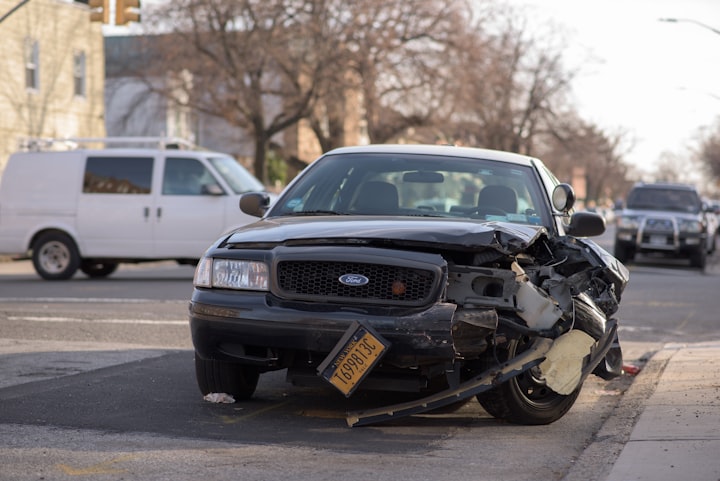Causes and Solutions for No Brake Fluid Coming Out When Bleeding the Braking System
The braking system is a car is one of the most important safety features and will avoid any accidents from occurring due to brake failure. Hence it is important to perform a brake fluid service along with a scheduled car service in Reading.

When the brake pedal level is too low, one of the most common brake problems occurs. Many car owners report that after a while, the brake performance changes and is no longer the same as when they purchased the vehicle. When performing car service in Reading, the mechanic's first step in this case is to bleed the brake fluid to remove any air bubbles. This may cause the delivery of brake fluid to the brake calliper to be delayed. This eventually causes lag in the braking process and reduces the level of the brake pedal. You may be surprised that no brake fluid comes out when bleeding during this process. Let's look at what causes no brake fluid to come out when bleeding and how to fix it.
What Is the Reason for No Brake Fluid Coming Out When Bleeding?
If there is no brake fluid coming out of the bleeding port in the brake calliper, there is a problem. Make sure you solve this problem before it becomes a danger by searching online for a full car service near me garage and allowing a car mechanic to repair the issue. The following are the reasons why the brake does not bleed:
Wrong Bleed Procedure - Although it is a simple task, it must be completed correctly. When done incorrectly, there will be no brake fluid coming out when bleeding. The issue may not be with the car, but with the person who is bleeding the brake fluid. This task should be shared by two people. While the other is bleeding, one person must press the brake pedal to provide pressure in the brake circuit. The brakeman should pulse the brake pedal 5 to 6 times before pressing and holding. Locate the bleeding screw while holding the brake pedal down. The bleeding person should slowly unscrew the bleeding screw, wait until the oil drains from the bleeding screw, and then tighten the screw. As specified in the user manual, check the Dot 3 or Dot 4 or Dot 5 and Dot 5.1 brake fluid levels. If you notice a low level, top it up before moving on to the next wheel. This process should be repeated three times per wheel until there is no more air visible.
Bad Bleed Screw - Because brake callipers use brake fluid, the bleed screw is located at the calliper’s highest point. It functions similarly to a valve for bleeding the air out of the brake fluid. The bleed screw is located behind the wheel in the brake calliper. As a result, it lives in a difficult environment. It is subjected to heat from braking as well as dust and mud from the wheels. Because of the harsh environment, the bleed screws may rust or corrode, making removal difficult. The screws can be removed, but the bleeding passage is blocked, so the screws cannot be removed.
Brake Flex Hose Fault - Flex hoses transport brake fluid from the reservoir and brake master/cylinder to the brake calliper. If the hoses are cut or torn, there will be no pressure in the brakes, and thus the brake bleeding will fail. It also causes a leak in the brake fluid.
How to Repair No Brake Fluid Flowing When Bleeding
Stick to the proper bleeding procedure for a proper bleed. If no brake fluid is coming from the master cylinder, try using a brake fluid recommended for your car model. Also, don't mix different types of brake fluids because it can harm your car's braking system.
If one wheel has no brake fluid or one calliper will not bleed, it could be due to a problem with the calliper’s sliding pins. The answer is to replace them. Check for any leaks in the oil seals of the brake calliper pistons as well.
Check for the pipes that deliver brake fluid to the rear brakes if there is no brake fluid pressure. When these pipes are exposed to corrosion, they develop holes and leak brake fluid. This prevents the rear wheels from bleed air and creates no pressure in the rear wheels. As a result, look for the source of the leak and, if it is discovered, replace the pipes as soon as possible.
If you suspect that the brake pedal is too light while there is no brake fluid to the right or left front callipers, look for a faulty flex hose that could be torn and relieve the pressure in the brake circuit.
If you are still in any doubt or not confident in performing the above then look for car service near me garage and get your braking system issue repaired to avoid a possible accident.
Frequently Asked Questions (FAQ’S)
Is it possible to change the brake fluid without bleeding?
When removing old brake fluid, bleed it by opening the bleed screws and adding new brake fluid at the same time. Keep the bleed screw open until you see new brake fluid coming out of it. It can be distinguished by its bright colour.
Is it necessary to have the engine running in order to bleed the brakes?
No, when bleeding the brakes, the engine must be turned off in order to prepare a sufficient amount of pressure before opening the bleed screw. This will not occur if the engine is running.
Is it okay to mix old and new brake fluid?
Water is easily absorbed by brake fluid. As a result, it is critical to replace the entire capacity of the brake fluid every two years and to use the proper type of brake fluid.
Why are my brakes still spongy after a bleed?
When you bleed, you lower all of the pressure in the circuit. After tightening the bleed screw, you must perform several string presses on the brake pedal to restore brake pressure and ensure that there is no pressure leakage in the brake circuit.
About the Creator
Car Services in Reading
Are you looking for a reputable and high-quality car garage in Reading ? Car Services in Reading is your one-stop shop for online garage services in Reading. Book online car repair services with us with confidence.






Comments
There are no comments for this story
Be the first to respond and start the conversation.